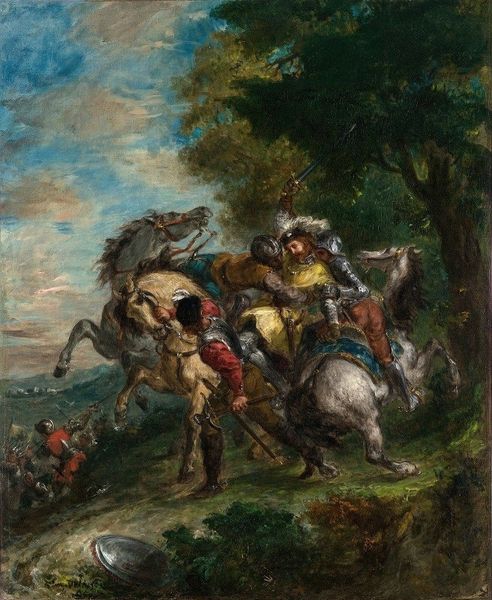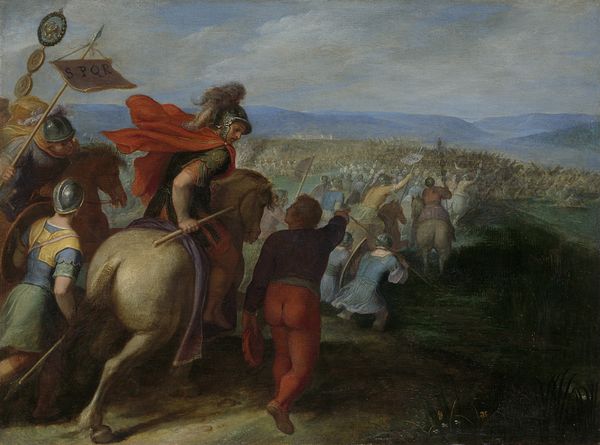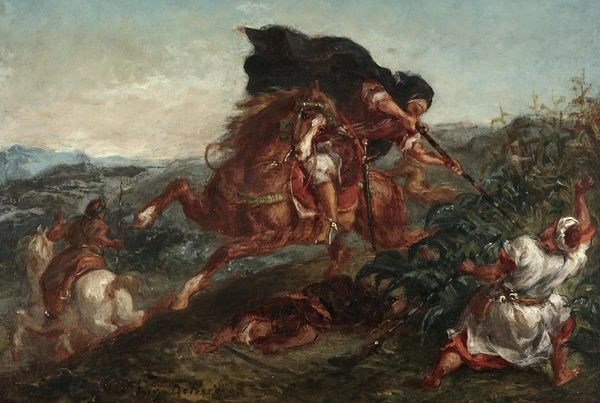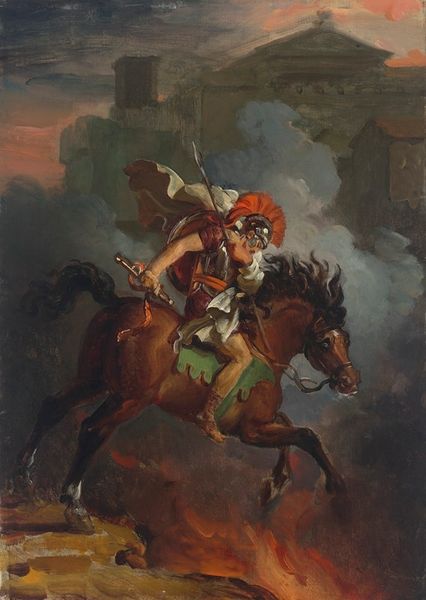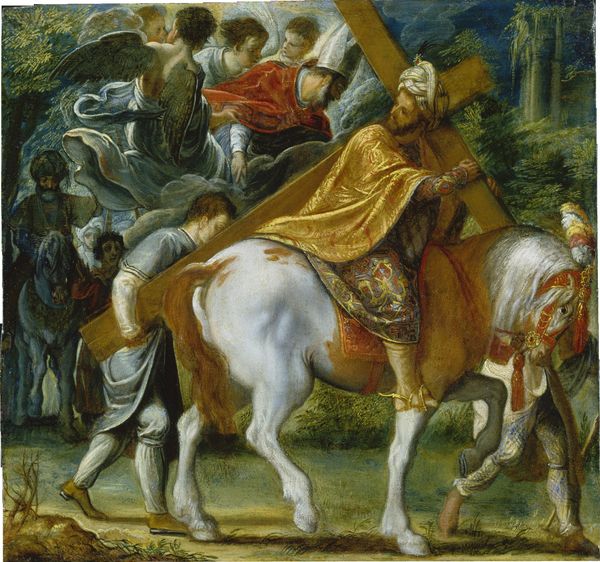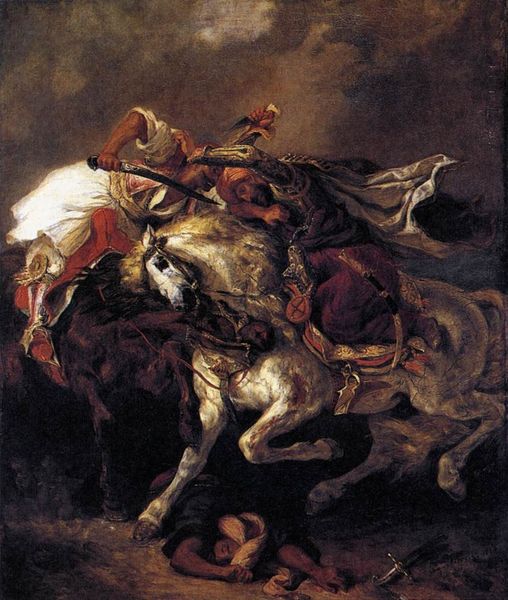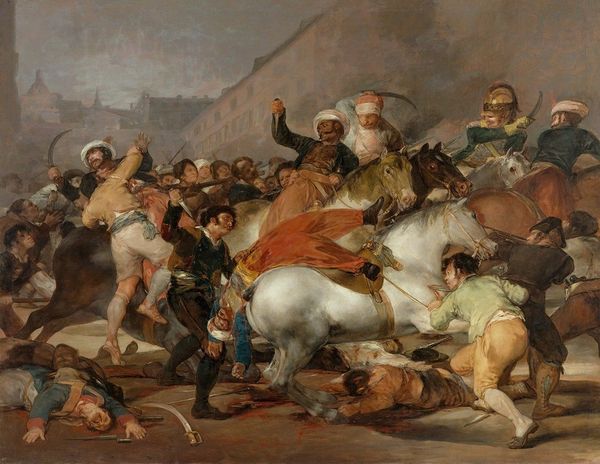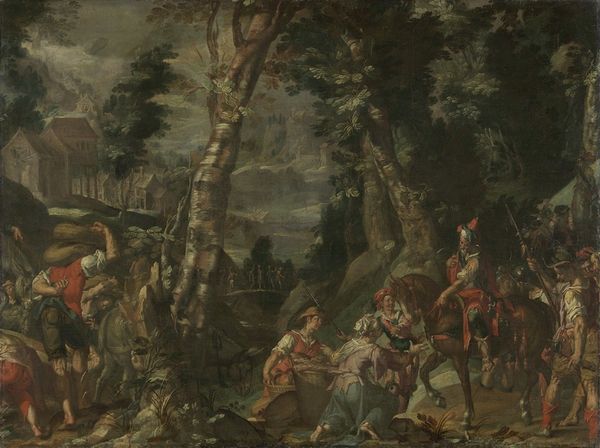
painting, oil-paint
#
narrative-art
#
painting
#
oil-paint
#
figuration
#
oil painting
#
romanticism
#
mythology
#
history-painting
Copyright: Public Domain: Artvee
Editor: So, this is "The Abduction of Rebecca," an oil painting by Eugène Delacroix from 1846. There’s such raw emotion pouring from this canvas. The woman’s limp form, the frantic energy… it’s intensely dramatic. How do you interpret this work, given its historical context and Delacroix's Romantic style? Curator: Oh, Rebecca! Doesn't it just stir something primal in you? This isn't just paint; it’s a fever dream. Delacroix wasn't simply depicting a historical moment—it is an operatic spectacle, the chaos, the struggle, all under this sky that looks like it's about to swallow the world whole. Notice how he uses light, almost weaponizes it, against the shadowy forms. Does it feel staged or genuine? Editor: It feels theatrical, but still captivating. I notice the castle burning in the background - how does that fit into the narrative? Curator: Ah, the burning castle! That backdrop is less about literal destruction and more a reflection of inner turmoil, wouldn't you agree? This scene isn’t just about abduction; it is about conflict, religious, and emotional! I see Rebecca's resistance, the kidnappers’ urgency, it becomes a timeless ballet of opposing wills. Editor: That's such an interesting way to see it. I had been focusing on the literal narrative, but I like thinking of it as a clash of wills playing out on a bigger stage. Curator: And isn't that the delight of Delacroix? He hands us the story, but invites us to feel its pulse. These weren't illustrations but visceral expressions of freedom and identity in the garb of Romanticism! Editor: Exactly! I'll never look at an abduction scene the same way again. Thanks!
Comments
No comments
Be the first to comment and join the conversation on the ultimate creative platform.
